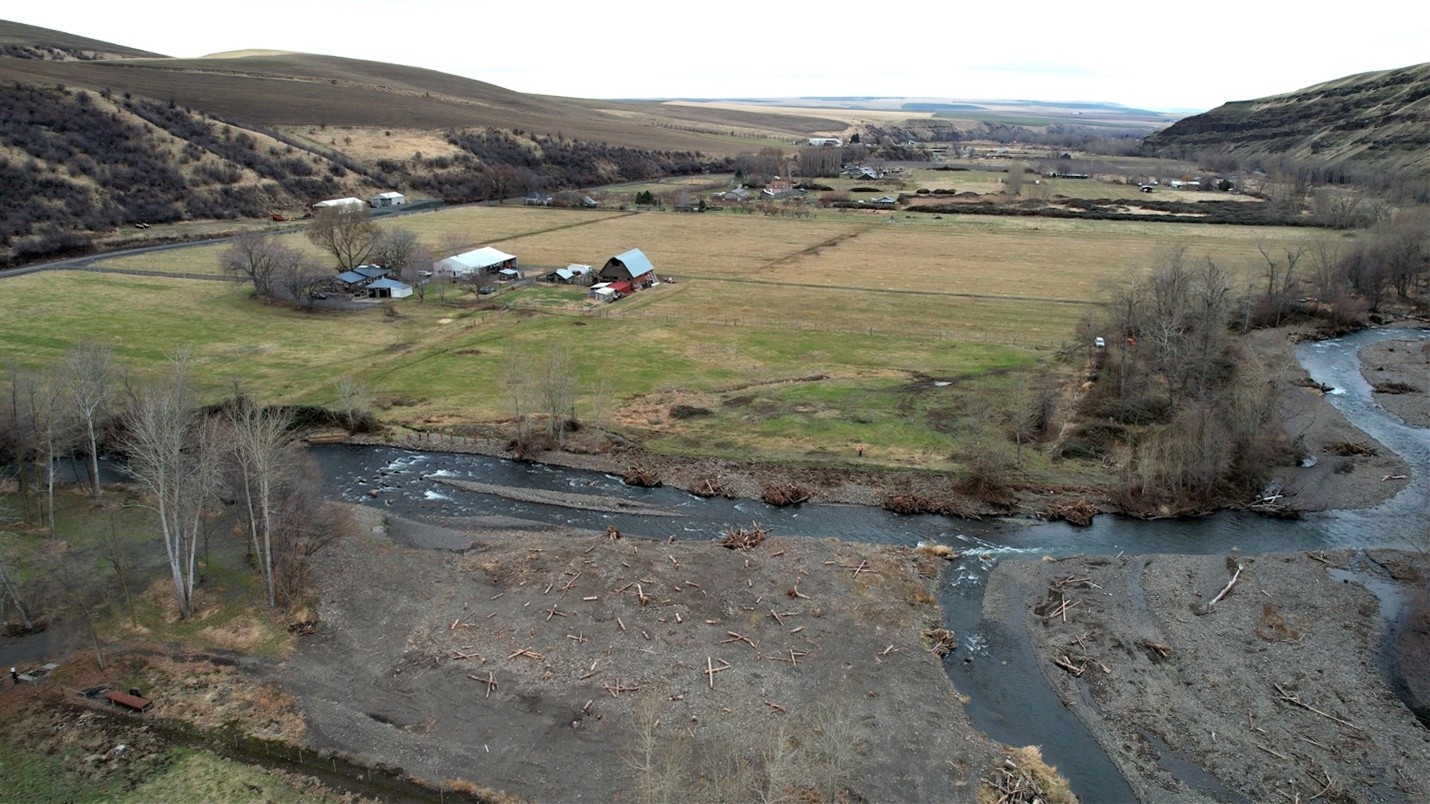 Confluence of the South Fork, North Fork, and Walla Walla Rivers
Confluence of the South Fork, North Fork, and Walla Walla Rivers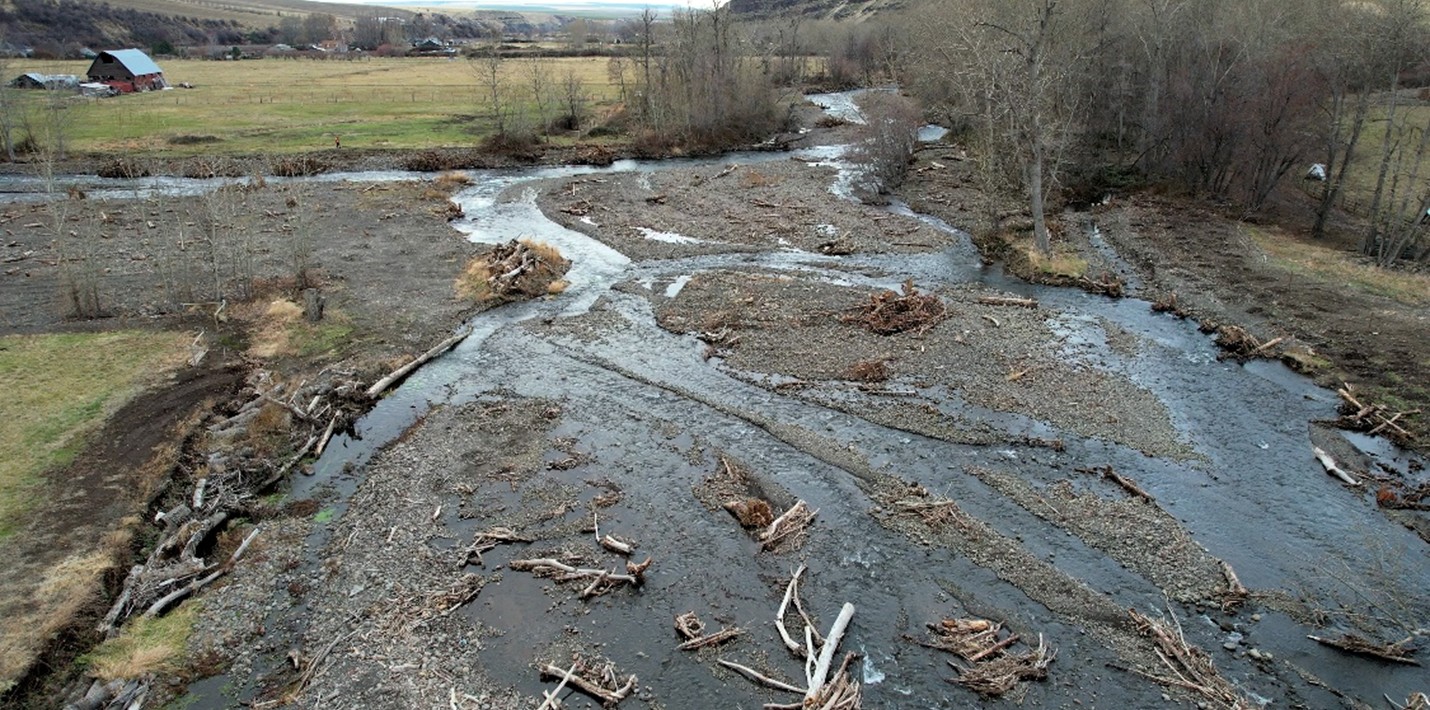 Confluence of the South Fork, North Fork, and Walla Walla Rivers
Confluence of the South Fork, North Fork, and Walla Walla Rivers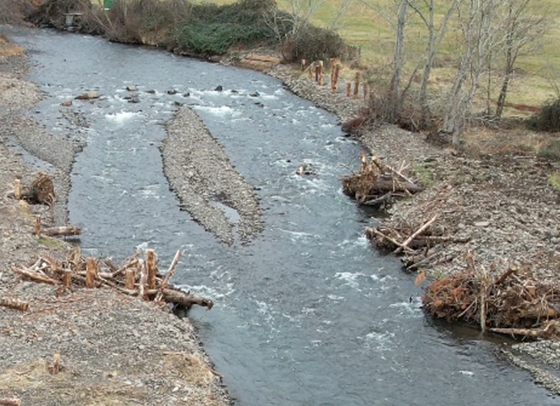 Roughened Channel and Large Woody Material Placed within the South Fork Walla Walla River
Roughened Channel and Large Woody Material Placed within the South Fork Walla Walla River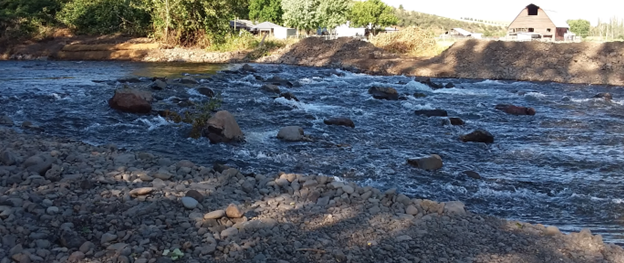 Sough Fork Walla Walla River Roughened Channel
Sough Fork Walla Walla River Roughened Channel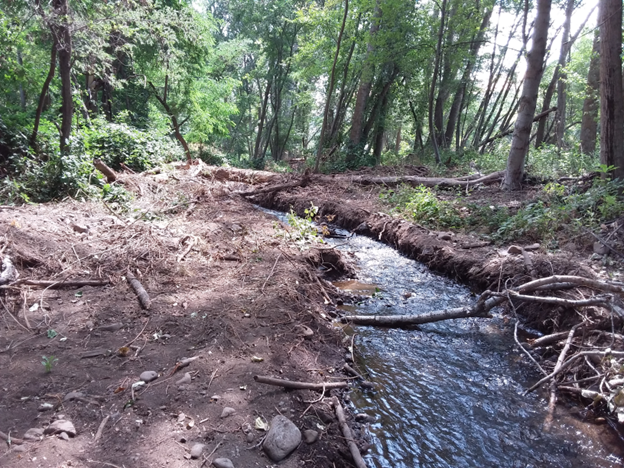 Reconnected Side Channel Habitat
Reconnected Side Channel Habitat
Walla Walla River Forks Restoration Project
Restoration of 4,000 linear feet of aquatic habitat.
The Confederated Tribes of the Umatilla Indian Reservation (CTUIR) have spent more than two decades systematically restoring aquatic habitat throughout the Walla Walla River Watershed. The Walla Walla River Forks Restoration Project is part of this long-term effort and represents one of the largest and most complex restoration projects completed by CTUIR to date.
The project focused on improving fish and wildlife habitat near the confluence of the North and South Fork Walla Walla Rivers by reestablishing natural river and floodplain processes, removing barriers to fish passage, and enhancing irrigation efficiency.
In total, the project restored approximately 4,000 linear feet of river channel across the mainstem Walla Walla River and the lower reaches of both forks. Through a combination of levee removal, channel realignment, and floodplain reconnection, the project helped restore ecological function that had been heavily altered by past land use.
By improving connectivity and habitat complexity, the Walla Walla River Forks Restoration Project supports the long-term recovery of native fish populations, including ESA-listed species such as bull trout and steelhead. The project also serves as a model for large-scale, collaborative watershed restoration that balances ecological goals with community and resource management needs.
Approach
- Reconnected the river to its historical floodplain and developed multiple side channels to enhance habitat diversity.
- Removed approximately 800 feet of confining levee that separated the river from its natural floodplain.
- Designed more than 2,200 linear feet of new side channels through restored riparian areas.
- Developed designs that maintained fish passage, protected aquatic habitat, and ensured continued delivery of irrigation water.
- Adjusted design approach to address flood impacts and incorporate emergency repairs following site damage.
- Designed and installed habitat enhancement features, including large woody material and native riparian.
Results
- Increased flood-storage capacity and reestablished connectivity between the river and its floodplain.
- Improved fish and wildlife habitat while ensuring unencumbered fish passage.
- Maintained reliable irrigation-water delivery for local agricultural needs.
- Protected juvenile fish and promoted healthy stream development.
- Contributed to the long-term restoration of ecological function, helping to undo centuries of environmental damage to the Walla Walla River system.

